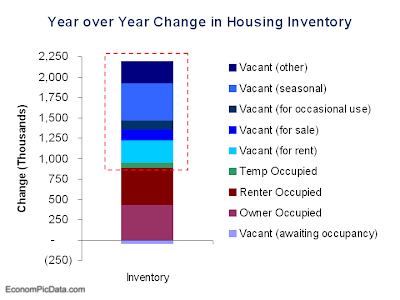Yves pointed out at Naked Capitalism:
Yes, negative real interest rates normally lead to speculative investment. But pray tell who is getting credit in the US now? Consumers most certainly aren't, businesses have it tough, the mortgage market depends on Federal guarantees, and by all accounts, the credit markets are having liquidity issues in many sectors. We saw a different version of this phenomenon in the S&L crisis: the prime rate wasn't all that bad, but it was irrelevant because just about no one could borrow in any meaningful size.
Why High Rates in Europe Haven't Impacted Inflation
Ambrose Evans-Pritchard points out:
For once I find myself in total agreement with France's Nicolas Sarkozy, who said the EBC rise was "at best pointless, at worst counter-productive." This is now plain to anybody who steps outside the Frankfurt Eurotower and takes the pulse of the -- collapsing -- credit and equity markets.
If the rate rise pushes the euro higher against the dollar, it will merely push oil higher as well -- since oil is trading as inverse dollar with seven times leverage. Eurozone inflation" -- that treacherous term -- will get worse. Brilliant.

As can be seen above, the difference between the Fed Funds rate and the European Central Bank's target rate generally predicted the future inflation variance between the U.S. and Europe (as defined by the difference between Consumer Prices in the U.S. and the Haromonized Index of Consumer Prices in Europe). From 1998 - early 2007 each Central Bank acted "ahead of the curve". The Fed took the lead either cutting or raising rates and the ECB followed.
Since mid-2007 the U.S. has cut the Fed Funds in dramatic fashion believing slow growth would inevitably deter inflation, while the ECB felt inflation could be stamped out with higher rates. Thus far, it looks like neither situation has worked out to eithers liking as the difference in inflation between the two areas has been negligible (the U.S. has seen inflation tick up 2.7% to 5.1%, while the Eurozone has seen inflation rise 2.3% to 4.1%).

















































